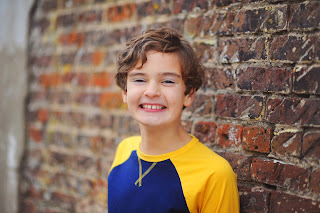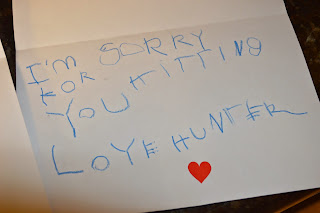The Eyes of Autism
So I have been writing often about Hunter's eyes. Pictures tell a thousand words, so I am going to visually prove my "Autism is in the eyes" theory.
Here are a few pictures of Hunter, pre-PANDAS.
Smiling eyes. The difference in these pictures is that you have eyes that match feelings. You caught me eyes. Happy eyes. Surprised eyes. Puzzled eyes. So many emotions.
For some reason, my pictures from June through November are MIA. We were in the process of a move at that time, so I am not quite sure what I did with albums from that period! I need to find some more of those...
The eyes and smile start to weaken.
He starts to drift away from others.


But then, an amazing thing happens.
Medical intervention.
Steroid Burst, Summer 2013
Time passes, the squint returns, along with some unfavorable behavior. Steroids are not for long-term results- inflammation will reappear, but for us, we enjoyed almost six months of easier parenting.
IVIG Round 1, February 2014
IVIG Round 2, March 2014
IVIG Round 3, April 2014
There was a study done with children with Autism in 2013 that found that children on the spectrum have larger responses to visual stimuli in the brain's cortex. "The "map" of the cortex, in which the space allotted to each visual field is set, develops early in life. The new finding suggests that "children with autism have a basic difference in how their visual cortex is mapped," Foxe said. "More neurons were being devoted to process information in the periphery" (live science.com). The inability to control the motor movements in the visual region could contribute to the poor eye contact. I have also heard that the images are too much for kids on the spectrum to handle. Their little brains process information so differently than you and I.
The eyes don't lie.
The pictures above show Hunter pre-PANDAS, post-PANDAS....
...and in the stages of recovery.
Here are a few pictures of Hunter, pre-PANDAS.
Smiling eyes. The difference in these pictures is that you have eyes that match feelings. You caught me eyes. Happy eyes. Surprised eyes. Puzzled eyes. So many emotions.
For some reason, my pictures from June through November are MIA. We were in the process of a move at that time, so I am not quite sure what I did with albums from that period! I need to find some more of those...
Hunter- 16 months
Then, at 17 months, PANDAS hit. Strep attacked the basal ganglia...and here is the result...The eyes and smile start to weaken.
He starts to drift away from others.
The dancing eyes are gone.


 |
| This picture looks good, but it was the 100th take |
The eye contact starts to fade.
The squinty smile starts, trying to organize the visual field in front of him.
Medical intervention.
Steroid Burst, Summer 2013
 | ||
Beautiful eye contact, and a smile that matches the eyes.
   |
squinty eyes are gone!
Time passes, the squint returns, along with some unfavorable behavior. Steroids are not for long-term results- inflammation will reappear, but for us, we enjoyed almost six months of easier parenting.
IVIG Round 1, February 2014
 |
| eyes are starting to lighten up again...true smile is starting to emerge |
IVIG Round 2, March 2014
There was a study done with children with Autism in 2013 that found that children on the spectrum have larger responses to visual stimuli in the brain's cortex. "The "map" of the cortex, in which the space allotted to each visual field is set, develops early in life. The new finding suggests that "children with autism have a basic difference in how their visual cortex is mapped," Foxe said. "More neurons were being devoted to process information in the periphery" (live science.com). The inability to control the motor movements in the visual region could contribute to the poor eye contact. I have also heard that the images are too much for kids on the spectrum to handle. Their little brains process information so differently than you and I.
The eyes don't lie.
The pictures above show Hunter pre-PANDAS, post-PANDAS....
...and in the stages of recovery.


































Comments
Post a Comment